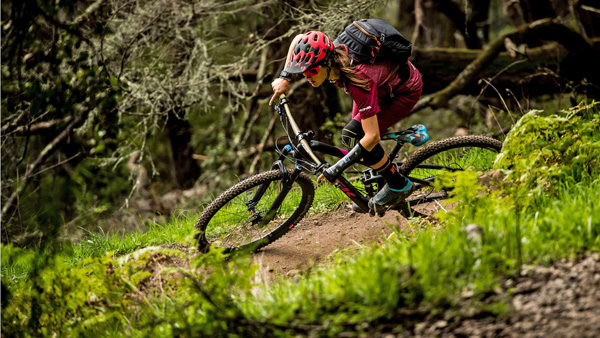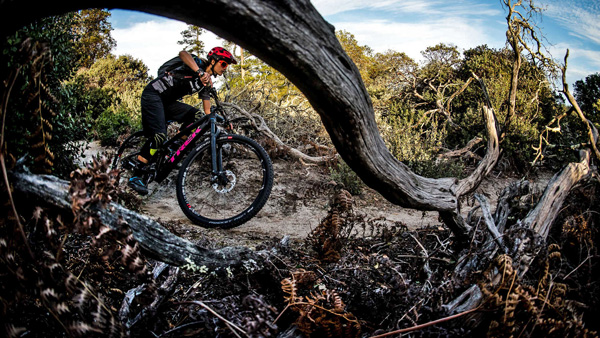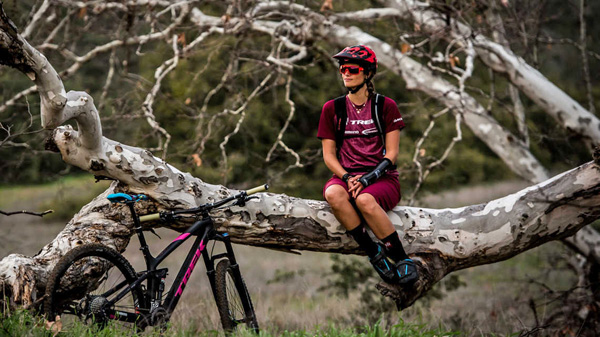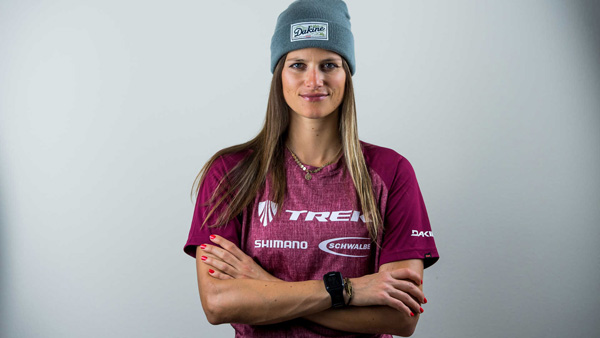All of us have moments that we play over and over again in our heads. Celebrations. Triumphs. Slip-ups. Heartbreak. These moments remind us of who we are, and they help to determine who each of us become. This is the story of one of those moments, the journey it inspired, and the healing power of the bicycle.
One needs only take a quick glance at Steffi Marth’s career to understand that she really likes bikes. She’s ridden them a lot, and isn’t the type to turn down an opportunity. While many athletes are quick to pigeon-hole themselves into whichever discipline they think gives them the greatest advantage, the German mountain bike racer’s CV suggests a less calculated, if more inspiring, approach to the sport. It’s the approach of someone in love – someone who has never stopped trying to get more out of riding, and herself.
Steffi is best-known for her achievements in 4X, a fast-paced, head-to-head format of 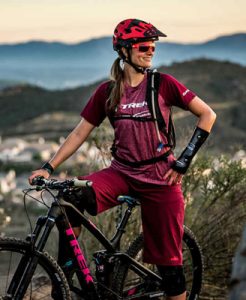 mountain bike racing that involves lots of jumps and berms and requires as much courage as it does raw strength. It’s like BMX, but the bikes are bigger and the speeds are higher. It was a natural progression for Steffi, who began riding BMX as a child and was already an experienced racer by the time 4X started to gain steam. She went on to compete on the 4X World Cup circuit, but as the discipline eventually began to wane in popularity, Steffi decided to do exactly what she’s always done: she put her creativity and skills to work, competing in enduro and downhill and even dabbling in freeride.
mountain bike racing that involves lots of jumps and berms and requires as much courage as it does raw strength. It’s like BMX, but the bikes are bigger and the speeds are higher. It was a natural progression for Steffi, who began riding BMX as a child and was already an experienced racer by the time 4X started to gain steam. She went on to compete on the 4X World Cup circuit, but as the discipline eventually began to wane in popularity, Steffi decided to do exactly what she’s always done: she put her creativity and skills to work, competing in enduro and downhill and even dabbling in freeride.
By the summer of 2016, she was an established name in the gravity world, and had become well-known as an advocate and role model with her skills camps and infectious passion for riding. Steffi was living out her dream of exploring new locations and pushing herself into new styles of riding, balancing a healthy schedule of races and competitions with passion projects and time for adventure. The pressures of racing that had always given her anxiety hadn’t gone away, but Steffi explains that for the first time she felt as if mountain biking had become her most powerful tool for self-expression, and an incredible opportunity to inspire and teach others about the most important part of her life. Things were on the up, and another great adventure was in the pipeline.
Steffi had planned a 4-week trip in British Columbia, which she hoped to kick off with a strong showing at Crankworx Whistler. One of her favourite terms is ‘FOMO’, which stands for ‘Fear of Missing Out’. The day before Steffi was scheduled to depart for Canada, FOMO crept into her head and she decided to race the German 4X National Championships on a whim. Little did she know, this decision would go on to be one of those moments she’ll replay in her head for years to come. The race didn’t go as planned.
Mountain biking is an exhilarating sport, but it’s not without risk. As an elite racer, Steffi was no stranger to crashes. She’d taken a nasty spill in the World Cup DH race at Lourdes the year before. She’s used to seeing her shins bloodied up after a difficult race and was familiar with the stinging feeling of washing gravel out of her wounds. At the 4X National Championships, Steffi was in the lead as she approached a large step-down jump. She’d cleared the jump a handful of times before, and remembers her attitude in simple terms: ‘no worries.’ But this time, she didn’t.
Unfortunately, the crash resulted in serious nerve damage to her hand. The race was lost, but in that moment she feared she could lose much more – the ability to grasp a handlebar and ever ride a bike again. The trip to Canada was off, and her adventurous itinerary was replaced with an imposing schedule of surgeries and doctor’s appointments. Multiple surgeries couldn’t fix the extensive damage to Steffi’s ulnar nerve, but she simply couldn’t accept the idea that one mistake would take away the life that she loved and had worked so hard to create. She wanted to continue progressing in competition and inspiring more people through mountain bikes.
Staring down the barrel of bone graft surgery that would take her out of commission for at least another season and came with no guarantees, she began exploring alternative options. As a recovering academic who had recently earned her Master’s degree, she naturally dove into books and put all her efforts into researching ways to get better. She admits it was exhausting, and didn’t produce the results she was hoping for. Against the advice of her doctors, Steffi implemented her own rehab regimen using the only medicine she knew would work. Steffi decided to ride her bike again, despite the pain and the risk of further injury.
‘I felt like if I was ever going to heal, my body and my soul needed to snap out of the sorry and inactive lifestyle of rehab and hospital appointments to one full of the things I actually like – things like bikes and sun,’ she explains. Steffi also embraced her wanderlust, and travelled to California to look for clarity on casual trail rides. Even if this plan couldn’t cure her hand, she knew it was the only thing that could cure her soul.
Everyone rides for different reasons, but there are some elements of the experience that have universal appeal. In the end, all of the podium shots or completion trophies in the world can’t replace the simple joy of going out for a trail ride. Indeed, it was the simplest parts of riding that proved most healing for Steffi as she got back out on the bike. The crisp click of changing gears. The buzzing of the chain. The wind in her face. Steffi’s story shows just how impactful that feeling of freedom and release can be, and how sometimes a step back is all it takes to rediscover your passion.
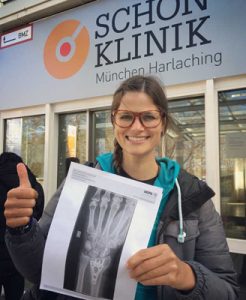 Eventually, the time came for Steffi to return to Germany for the appointment she ominously dubbed ‘judgement day’. Even though riding in California had proven that she could survive without racing, she dreaded the test results nonetheless. Then she saw the surprised look on the neurologist’s face.
Eventually, the time came for Steffi to return to Germany for the appointment she ominously dubbed ‘judgement day’. Even though riding in California had proven that she could survive without racing, she dreaded the test results nonetheless. Then she saw the surprised look on the neurologist’s face.
Remarkably, Steffi’s ulnar nerve had started to recover for the first time since her accident. She was told that she could ride as much as she wanted, effective immediately. Just a year after the crash, she’s making her way back into riding competitively, and the only visible reminder that remains is a custom wrist guard that she now wears whenever she rides. It’s a reminder of the risks she continues to take, but it also reminds everyone she encounters that she will persevere even in the face of the most difficult and unexpected challenges, as long as she can still get out for a ride on a beautiful sunny day.
We’ll never know for sure if mountain biking made Steffi’s hand start working again, but her story is a powerful statement about the immense healing potential of doing what you love. It doesn’t take an unfortunate injury to enjoy the therapeutic effects of riding. We’d never encourage someone to disobey a medical professional, but for Steffi, bikes really were the best medicine. For her, the bicycle healed the ailment that needed healing.
Steffi, like countless others, understands how a couple of cranks on the pedals can melt worries away. That’s not something to take for granted. So get caught up in the challenge of climbing and cherish the flow of a steep descent. Make some memories and hold onto those feelings. Grab your bike and go. When things get rough, you can always play those moments of beauty and inspiration in your head. Over and over again.
Source: Trek South Africa (The Best Medicine)
You can follow Steffi Marth on Twitter or Instagram


